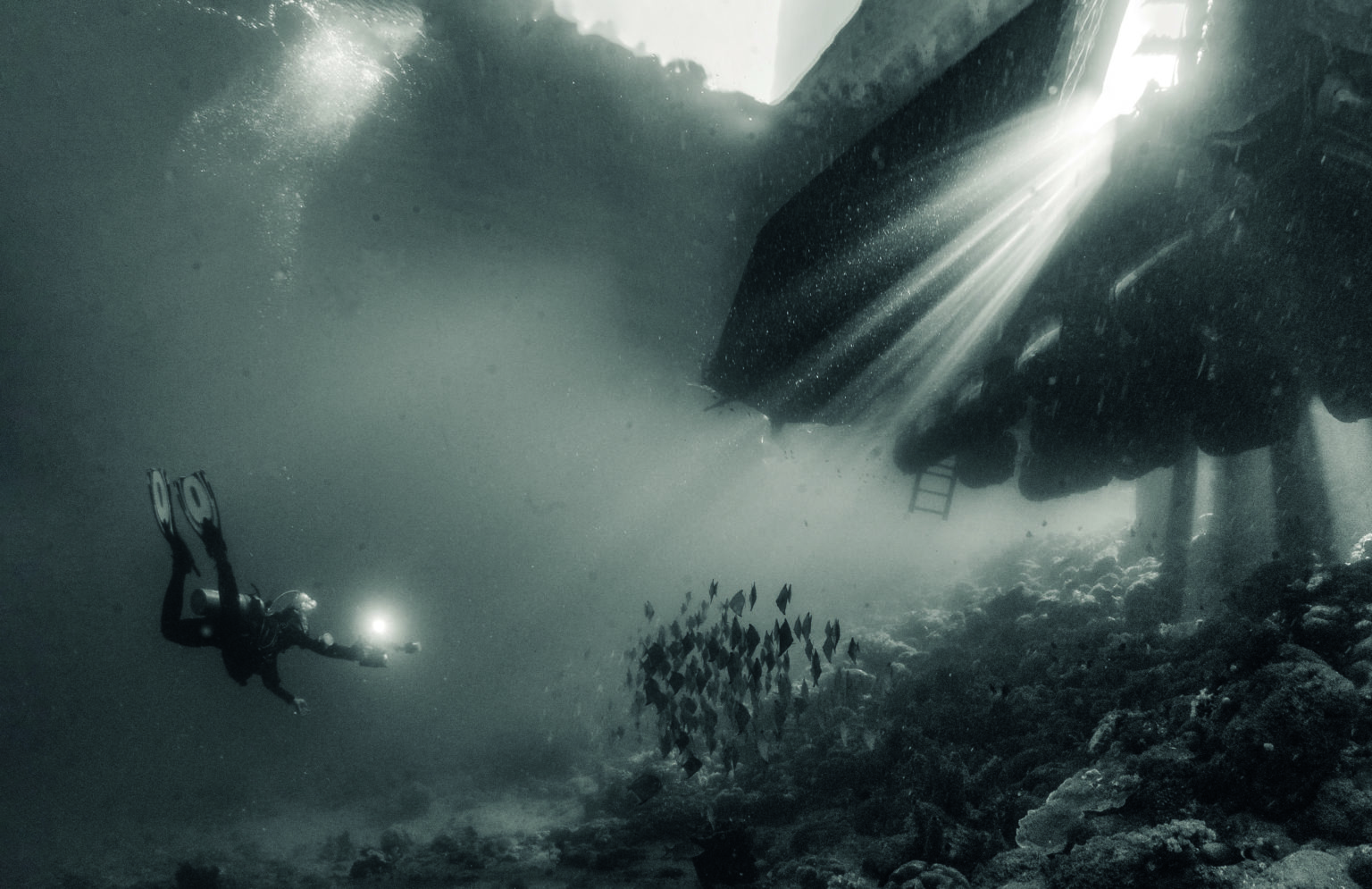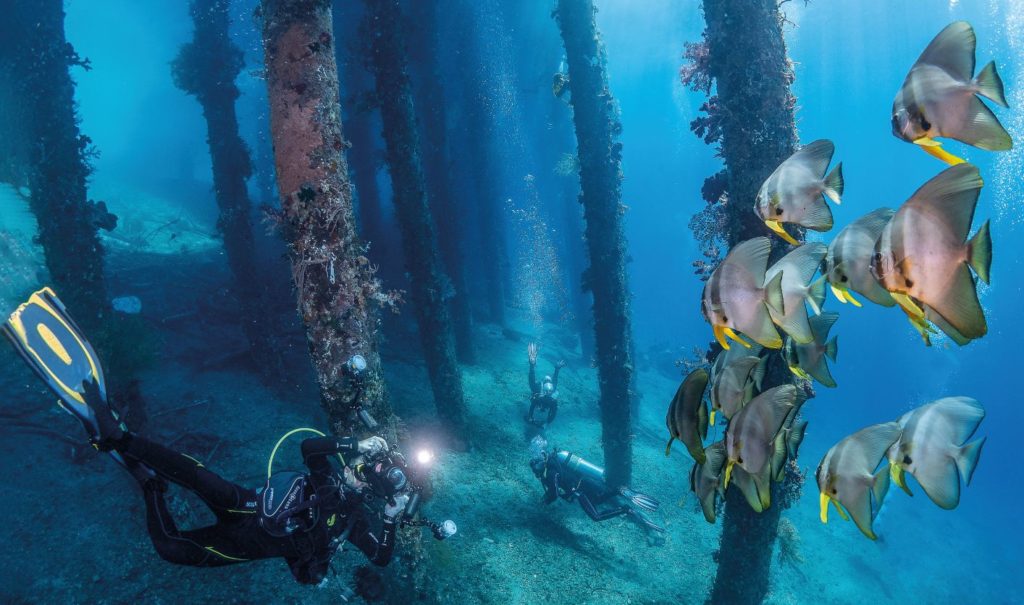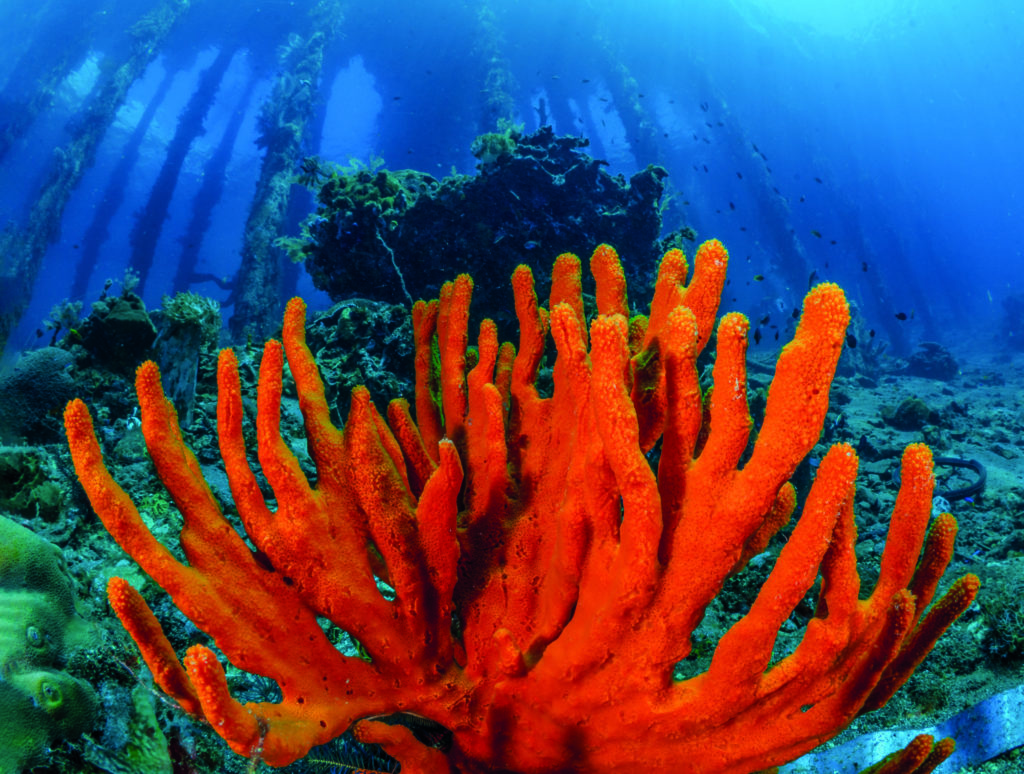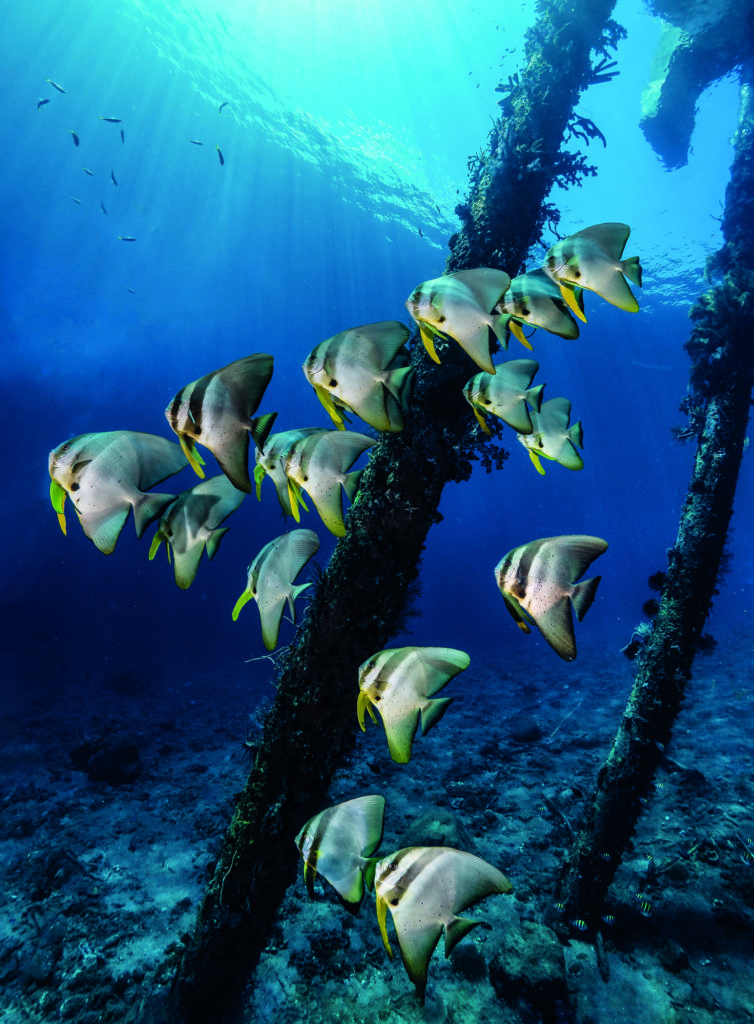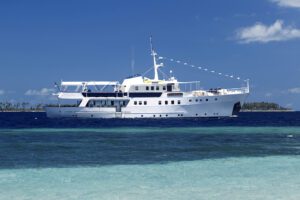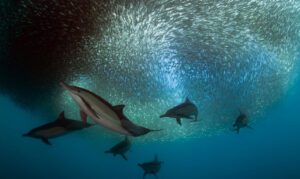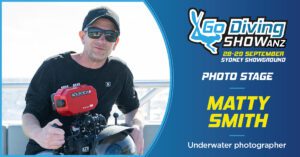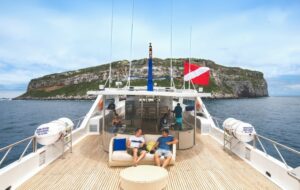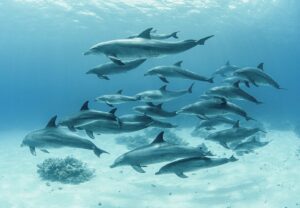Paul ‘Duxy’ Duxfield focuses on shooting underwater photographs under and around piers and jetties. Photographs by Paul Duxfield
Thinking of a quirky title was easy for this article, I like a play on words, it’s one of the things I love about our language so much. I also had ‘Pier pressure’ in the firing line too… Anyway, it’s taking pictures we’re interested in and not my lexicographical quirks. And so I think you can probably guess this month’s piece is about shooting under and around piers and jetties.
Safety First
Okay, it’s prudent to mention the safety aspects of shooting in the environs of a pier or jetty at the top of the article, for the fairly obvious reasons that there may well be boat traffic, and comings and goings, in the vicinity of the aforementioned manmade structure – after all, that is its main purpose. Please check first that it’s okay to dive, and also be conscious of the fact that you really need to be suitably competent to have a handle on your buoyancy, so that you’re not randomly going to be popping up to the surface willy-nilly.
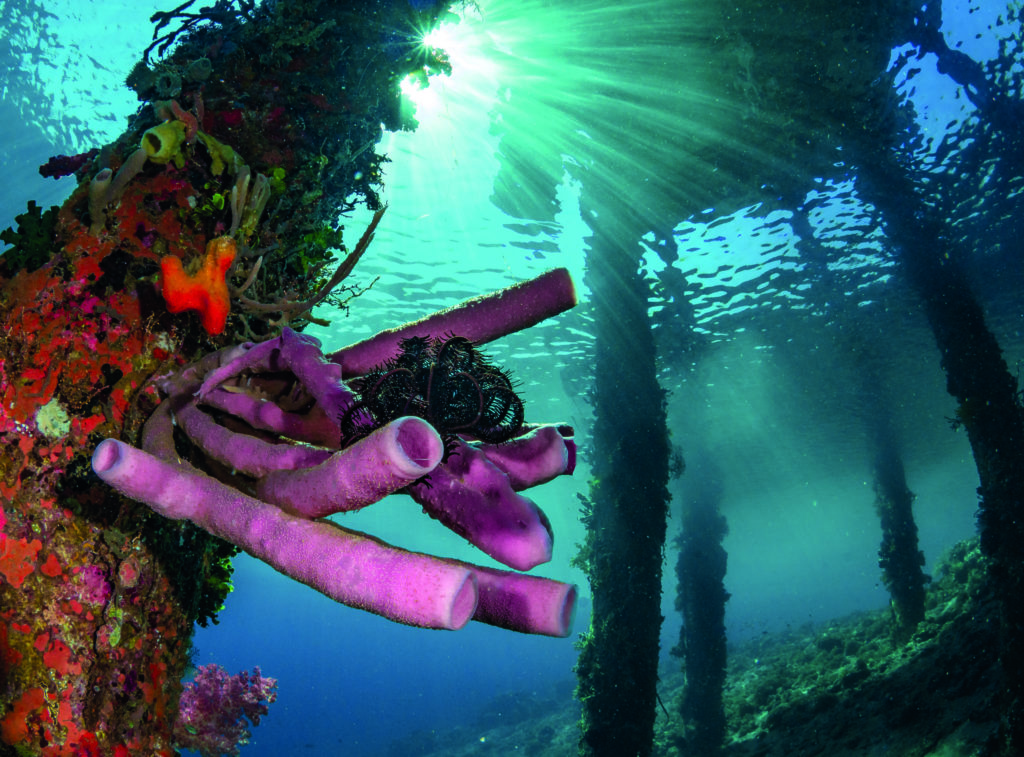
You also need decent in-water skills so that you’re not bumping into the legs of the jetty, as apart from being covered with marine life, they can cause you harm with sharp edges from coral growth or metal and stone work fittings and fixtures.
So take heed, check first, and keep your observational mindset to the fore, your situational awareness needs to be front and centre, and don’t let the photographic aspects take precedence over yours or others safety.
There is also a tendency because you’re very shallow to pay less attention to things like reverse and sawtooth profiles, but as we learn more and more about hyperbaric science, I’d say that because there’s a bigger pressure difference when shallow, you shouldn’t throw your normal safety protocols to the wind and instead be even more mindful of your wellbeing.
And definitely don’t start holding your breath, as I have seen a lot of underwater photographers do, as you should realise that you’re at a greater risk of a barotrauma in the shallows.
Jetty Life
One of the few positives about man-made intrusions into the underwater world is that when we plonk something into the water, be it a wreck or more relevant in this scenario, a many-legged structure, then it quickly becomes a great place for marine life to gather, attach and set up home on, in or under it.
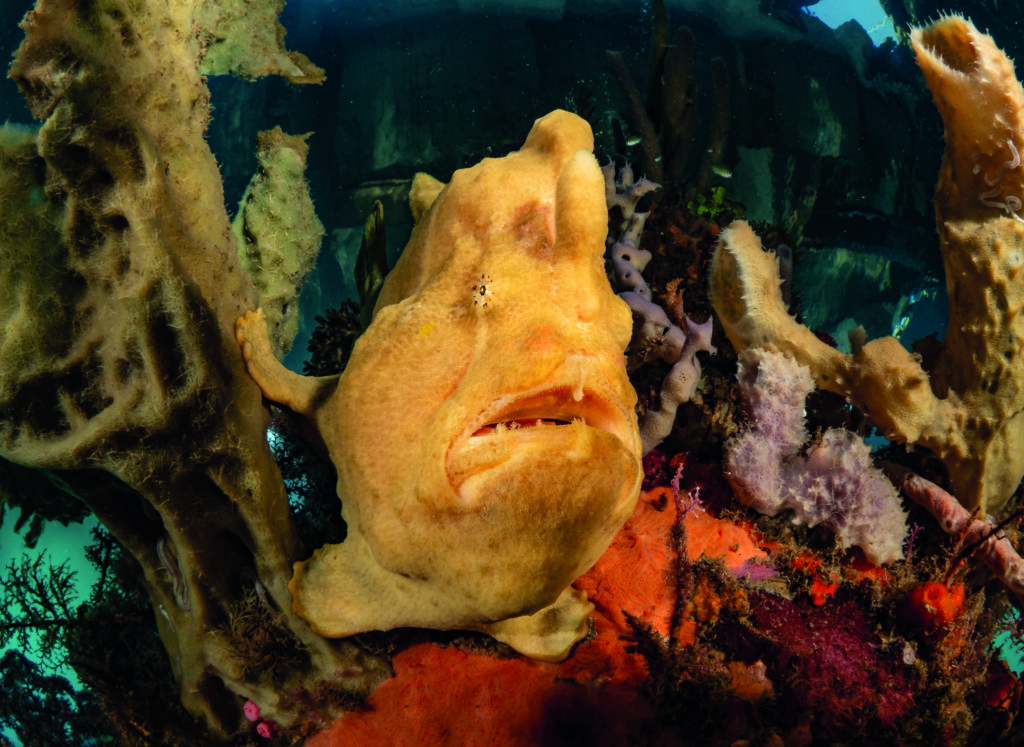
It provides shelter and shade, and very quickly from the man-made catalyst of the structure, springs forth a tiny and vibrant ecosystem. Soft corals, then hard corals over time, attach themselves. Small nurseries of fish harbour in relative safety, tiny crustaceans and nudibranchs feed on the growing corals, and each other. Larger fish cruise on by picking off the less-wary individuals that stray beyond the safety of the pier. Ambush predators can hide among the sponges and coral with a steady supply of hapless prey to feast upon.
So very quickly a pier can become a densely packed example of the reef system at large, and usually fortuitously positioned for divers and snorkellers to easily visit, and for us underwater photographers, provides rich pickings for our digital goody bags.
Wide-angle or Macro?
The title should really say Wide Angle AND Macro, as these environments will provide plentiful subject matter for either type of underwater photography enthusiast.
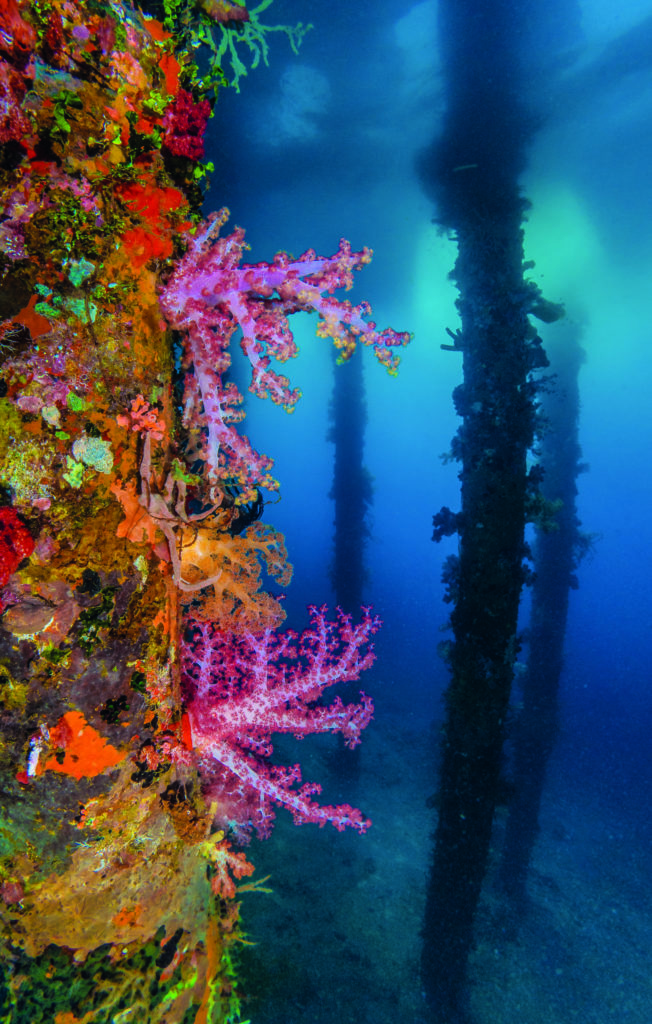
Personally speaking, I prefer wide angle, as I like the bigger picture, but I’m well aware that there is a significant proportion of underwater shooters that love the teenier life, and to be honest, whatever lens you went down with you’d have to dive with your eyes closed not to come back with a card full of shots.
On my last Indonesian adventure we visited Alor and there was a dive we all voted to return to as one of our favourite spots of the week, which was a pier around half an hour away from the beautiful Alami Alor Resort, which was our home for the week. Most of the pictures for this article came from that dive alone, so productive was it.
To be honest, I was torn re lens choice, as although I had dived it with my fisheye lens firmly fixed, I could really have done with another dive on it just armed with a macro lens and a snooted flash to tick all the boxes.
For those of you with the choice of using a wet lens with both a wide angle and macro lens you can use on the same dive, you’ve got all the options covered, and your only problem will be making a decision.
Sites like these are not places for those that struggle with making decisions!
Even if you are shooting wide angle or fisheye like myself, please take the time to enjoy the dive itself and have a really good look on the pier legs for the myriad of life that resides there.
Frustrating as it can be uncovering great macro subjects when you’ve got a fisheye lens attached, please try and remember that you’re still allowed to enjoy the dive in its own right, regardless of whether or not you get a lovely shot of a nudibranch you’ve never seen before.
No point whatsoever getting a grump on in a tropical paradise, in bath-temperature clear water, just because you’re denied a shot, now is there?
Pier Planning
Rather than just diving in and feasting upon the smorgasbord of photo opportunities that will inevitably present themselves at your choice of pier, why not take a bit of time, sit back and make a rough plan of action.
At the off-site pier in Alor, I had no previous experience of the site, and so listened even more carefully than usual to the briefing, trying to pick up some locational clues. So my rough plan was to descend around 30 metres from the pier and make my approach, looking for subjects to place in the foreground, with the structure of the pier making a silhouette in the back of the shot.
This also meant that there was two less folk crowding the pier, and having some divers in the back of my shots gave me some interesting photo options too.
It also meant my dive profile started at my greatest depth, as I knew the bulk of the dive I’d be in the shallow area just under the structure itself.
It also meant that things like frogfish, and batfish, etc, would already been have been found by the guides for the others in our group.
The guides at Alami Alor split our group in two, with a half-hour delay, meaning that we all weren’t on the jetty at the same time. This sort of consideration really makes a difference, and was another big tick to the high-quality guiding at Alami Alor Resorts overall operation.
Pier(ing) Into The Light
Sorry about that, I couldn’t resist. Okay, bad pun out of the way, I really love a jetty on a sunny day, as it really gives you fantastic opportunities to use the sun as a great compositional element in your shots. The trick is to try and use a nice small aperture and the fastest shutter speed your camera will allow with a strobe, and then to find something nice and colourful for the foreground, and only just hide the sun, either just out of the frame, or just being blocked with a piece of the structure itself.
When practiced, and finding out where your camera sensor starts to blow out the highlights, if you pull back from this point it will reward you with lovely beams of light bursting dramatically into your shot.
I’ve written an article in an earlier edition of the magazine looking at just this subject, and I find jetties and piers perfect to bring this technique to bear.
Apart from dramatic sunbeams, the environment of a pier will really allow you to exercise all your camera exposure techniques, as in one dive you’ll be able to try everything from low light, slow shutter speed shots, to classic deep blue background shots.
Having an understanding of the exposure triangle and how it impacts on your shots will give you the confidence to try all these things, and the beauty of a jetty and the normally large choice of subject matter will exercise your artistic skills too.
On my workshop trips I personally find these dives very rewarding, as I’m able to really help folk understand and learn the fundamentals of underwater photography in a very short time. So for the beginners they can use the dive to learn more about exposure, and the more-advanced can practice things like shutter dragging and sunbeam pictures. To be fair, a nice wreck will also allow these chances, but not normally in such shallow water.
Right On Your Doorstep
On the last day of our trip to Alami Alor, I opted for an afternoon dive on the house reef, and of course as is the case at most of these resorts they had their own jetty, which I’d used daily to embark and disembark from our daily trips to the reefs further afield, but never ventured beneath.
And such was the quality of the diving in this incredible part of the world that I’d neglected to stick my head underwater not 50 metres from my room and see what was right on our doorstep.
I won’t make that mistake again, and my buddy Patxi and I enjoyed a very lovely dive, with shafts of dramatic sunlight piercing the slightly murkier waters than the previously mentioned offshore pier, but no less rewarding photographically.
In fact, as the visibility wasn’t so good this only heightened the contrast in the light and dark, and really showcased the light beams in view.
There was also a nice school of fish coming and going, which were a photo challenge as they were very reflective, so careful strobe positioning and output was needed, and I ended up with way more misses than hits.
Myself and Patxi kept swapping places too, which meant that there was a human subject to place within the frame to give scale to the scenes.
Now being right on the doorstep may seem slightly oxymoronic when I’m talking about travelling all the way to Indonesia, but loads of my friends dive UK piers, with Swanage being a particular favourite, with them waxing lyrical about its charms, so why not delve beneath your local pier or jetty, closer to home and see what you can come up with?
Duxy Escorted Trips
A great way to learn how to use new kit and develop your skills is on a dedicated trip. My escorted trips are for all and if you have a GoPro or compact, I can improve your skills and realise your full potential in an easy-going, relaxed environment. If you’re a more-experienced shooter, my itineraries and locations are carefully picked to be very photographically productive.
Duxy will be leading a Red Sea liveaboard in 2023 – book now.
